

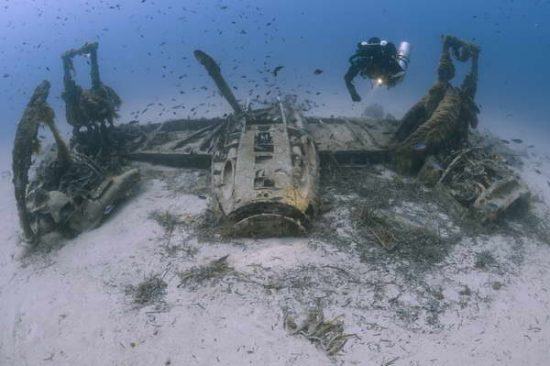
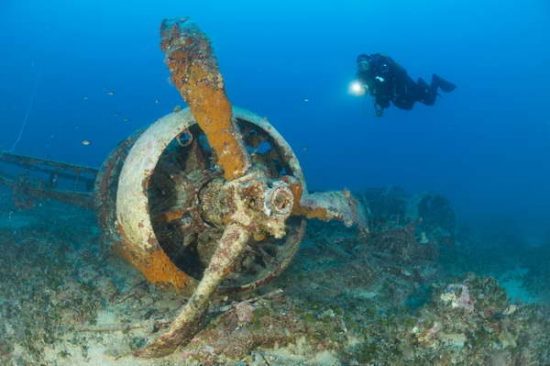
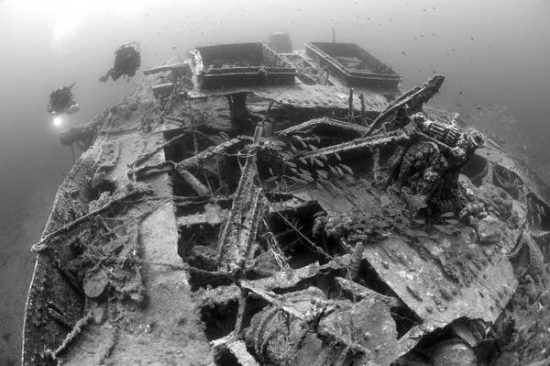
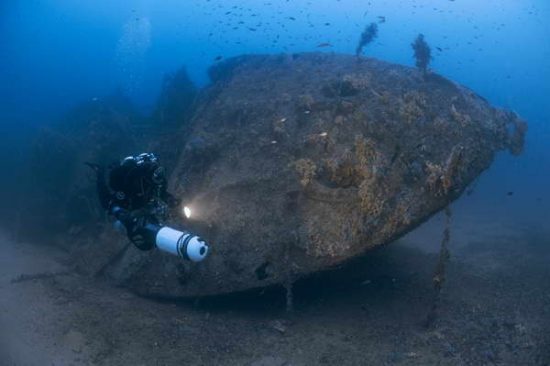
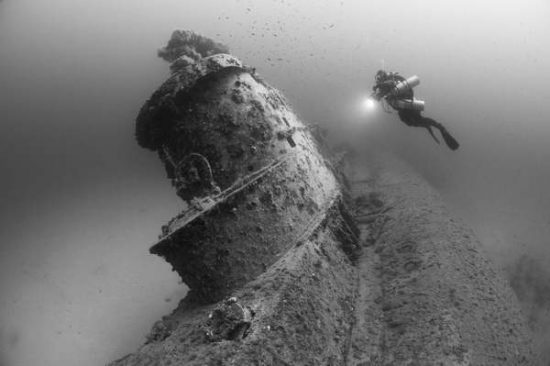
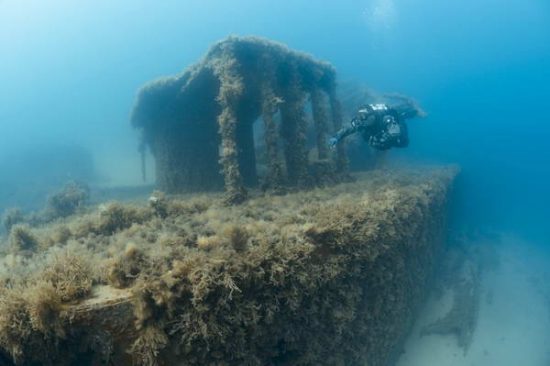
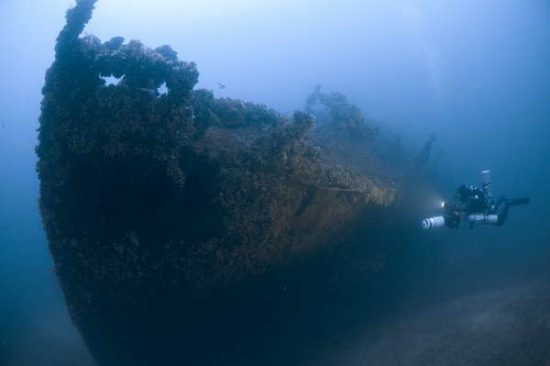
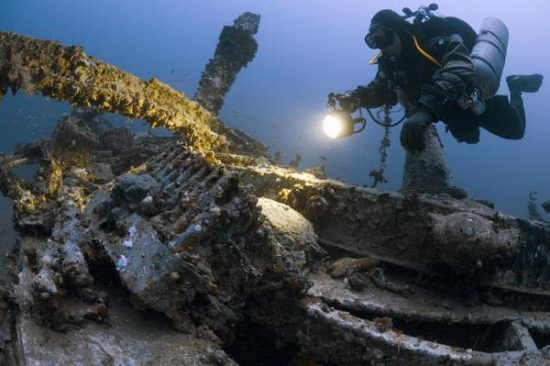
Strategically located, Malta saw some of the fiercest aerial and sea battles of World War Two, leaving a legacy of incredible shipwrecks in its deep blue waters. In addition, a fantastic collection of shallower wrecks, along with caves, drop-offs and crystal-clear waters make this a prime dive destination, with something for all divers, from those at the beginner level to the seasoned technical diver.
By 1942, Malta had become one of the most bombed locations ever, as Axis forces tried to neutralise this small Mediterranean country, which threatened the supply lines to North Africa. As supply-laden convoys fought their way through to Malta, a number of aerial and sea battles unfolded that became infamous for its sheer intensity. Due to the depth, the legacy of wrecks here has only recently began to be uncovered, with new ones being found every year, making Malta a prime technical diving location.
HMS Southwold
Sunk by a mine in March 1942 whilst towing a stricken ship during an air attack, the Royal Navy destroyer HMS Southwold lies in two halves and needs at least two dives. The bow lies completely on the starboard side at 68 metres and is strewn with artefacts, with impressive main guns pointing forward. The upright stern lies slightly deeper at 72 metres, with the rear guns angled upwards as if the ship was preparing to fire, a sombre reminder that this ship was at battle stations when it went down.
Schnellboot S-31
This unusual wreck resembles a dinosaur’s skeleton rather than a German torpedo boat. The S-boats were built for speed, constructed with a mahogany outer hull and light metal frame. However, here, the wood has long since rotted away, giving it a distinctive appearance. Sunk in 1942, this small 35-metre long wreck lies at 65 metres’ depth with plenty to see, including huge loaded 533mm torpedo tubes!
HMS Stubborn
This British S-Class sub is in remarkable condition and lies in 55 metres of clear water. After seeing extensive action in the war, she was sunk as a target in 1946. A completely intact conning tower and the menacing torpedo tubes are must-sees on this stunning wreck.
Le Polynesien
This 6,373-ton French liner was sunk by U-Boat UC-22 on 10 August 1918 during the closing stages of World War One, whilst carrying Serbian troops. Lying some seven miles from Valletta’s Grand Harbour, this magnificent wreck is one of the finest ever discovered in Maltese waters. It has an intact hull, lying on its port side in around 65 metres of water. At 152m long, it needs multiple dives to explore it properly.
Beaufighter
The hardy twin-engine Beaufighters saw much action at Malta. This aircraft took off on an anti-shipping mission in March 1943 but developed engine trouble. Both crew members escaped unharmed. The wreck lies at 40 metres’ depth on bright white sand, a short boat ride out from DiveWise.
Blenheim Bomber: Shot down by an Italian fighter in December 1941. The pilot ditched at sea and all crew members were rescued. Now, it lies at 40 metres’ depth, with one propeller still attached.
HMS Hellespont: A paddle steamer sunk by Axis aircraft in April 1942. The wreck lies upright at 45 metres outside Grand Harbour, offering divers lots to see during their dives.
HMS Maori: A destroyer that participated in the hunt for the Bismarck, it picked up survivors from the mighty German battleship. This is a popular shore dive at about 14 metres of water in the Grand Harbour. It was sunk by a bomb in 1942, and later broke in two. The bow lies in St Elmos bay whereas the stern was towed to deep water.
HMS St Angelo: A tug used as a minesweeper. Sunk in May 1942, the wreck lies at 55 metres’ depth near the harbour.
HM Drifter Eddy: A small minesweeper struck by a mine in May 1942, with the loss of eight lives. The wreck lies at 56 metres’ depth.
X127 Lighter: Originally built to support the ill-fated Gallipoli landings, this ship was used as a fuel barge when it was sunk by dive bombers right in front of the submarine base on Manoel Island in 1942. Lying between five to 22 metres, visibility is often poor but it is a historically interesting wreck.
Worth knowing: Over the past few decades, multiple ships have also been sunk and used as dive sites within recreational depth ranges. Malta is a wreck diver’s oasis.
Special thanks to: DiveWise / TechWise www.divewise.com.mt and www.techwise.com.mt
Getting there: Air Malta caters to divers with very reasonable excess baggage packages. There are numerous accommodation choices in Malta, depending on your budget.
Best time to travel: Malta can be dived all year round. Autumn, winter and spring are popular with drysuit-clad technical divers due to the cooler surface temperatures. During the summer months, the weather is more stable.
Words and Images by Steve Jones www.millionfish.com
 Herbert
Herbert 9th October 2017
9th October 2017